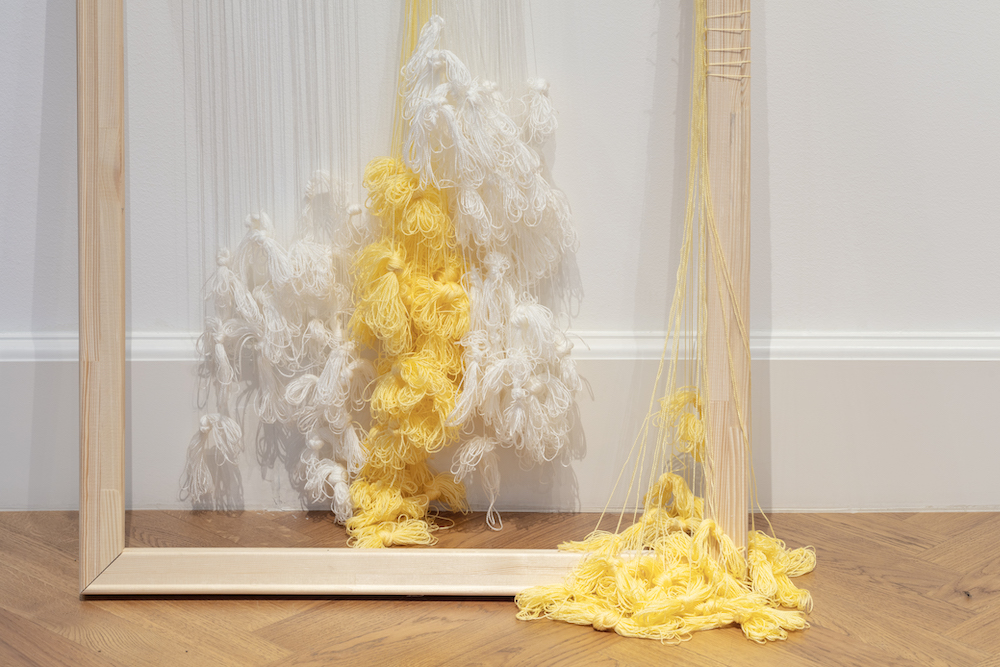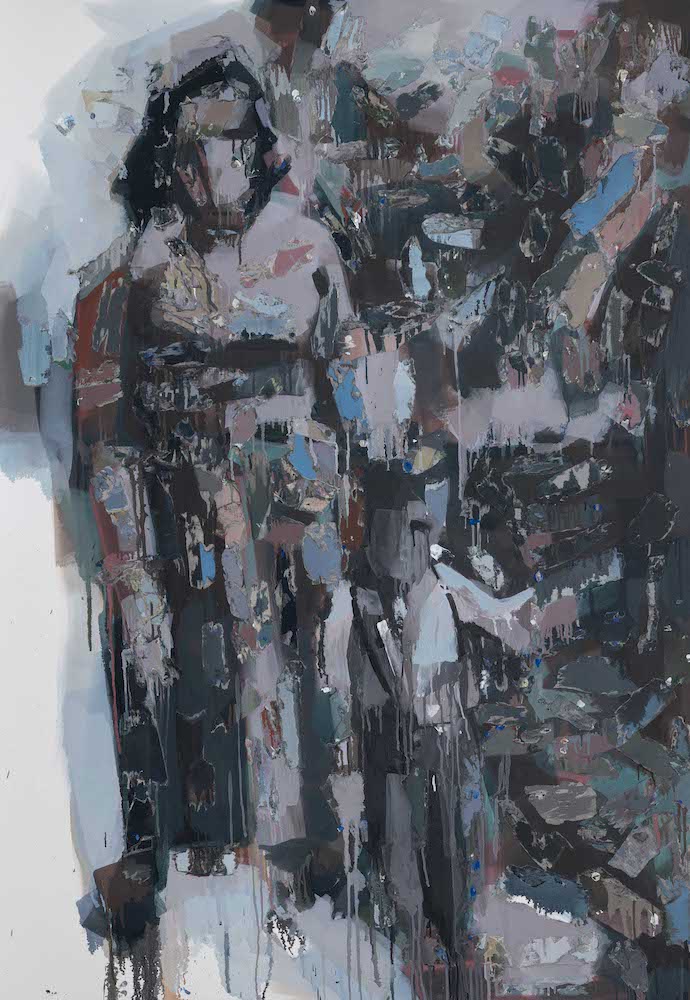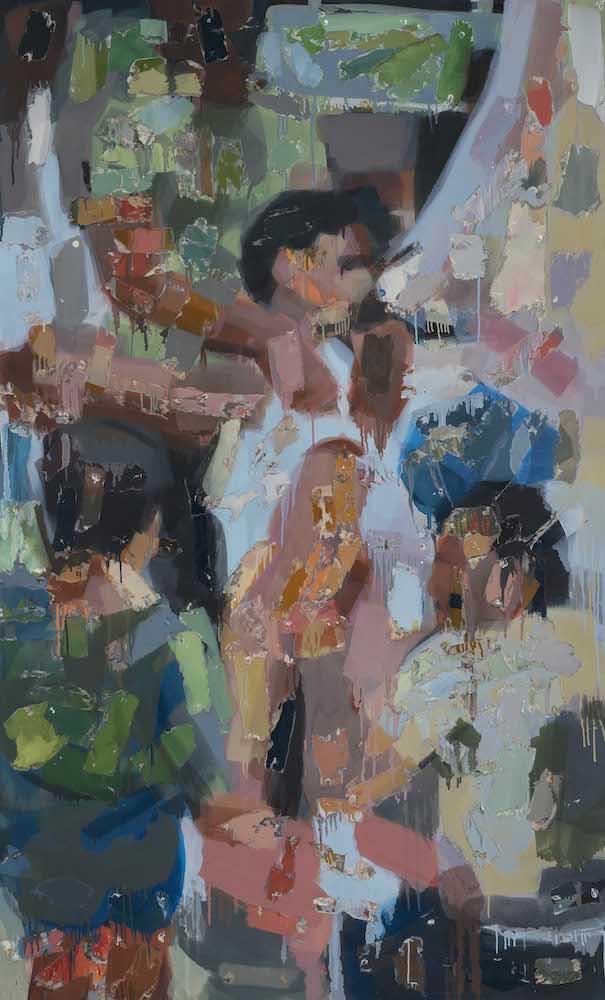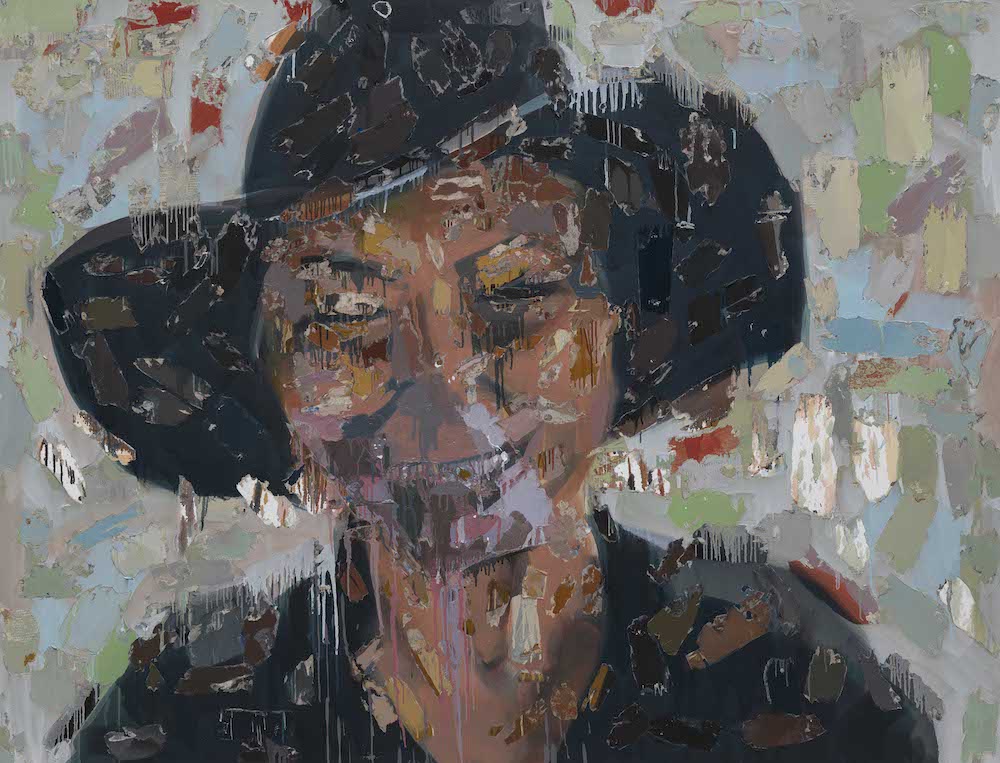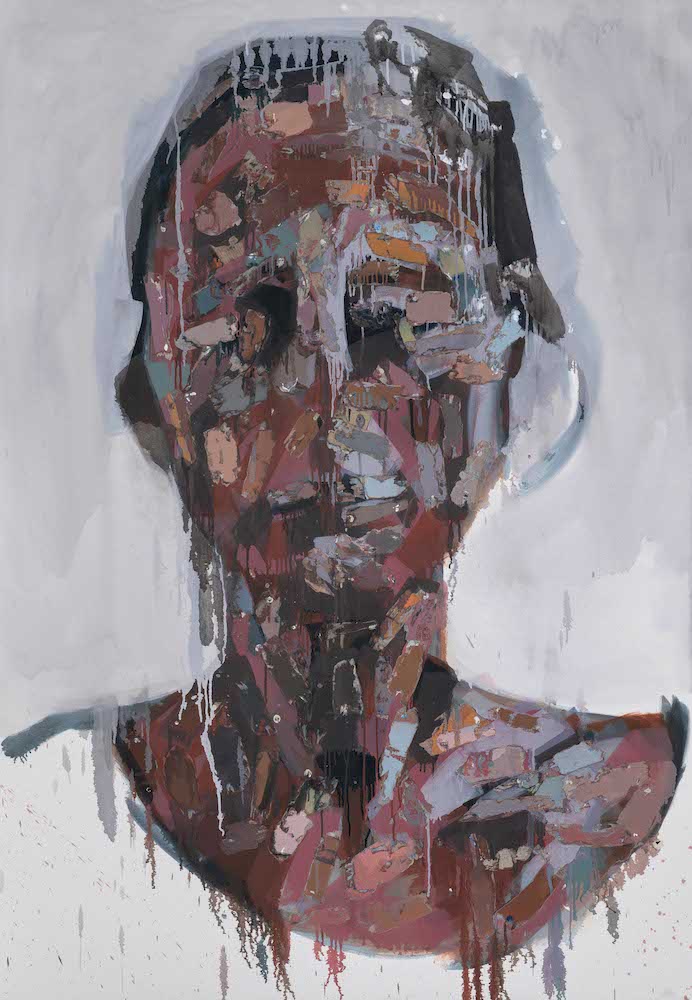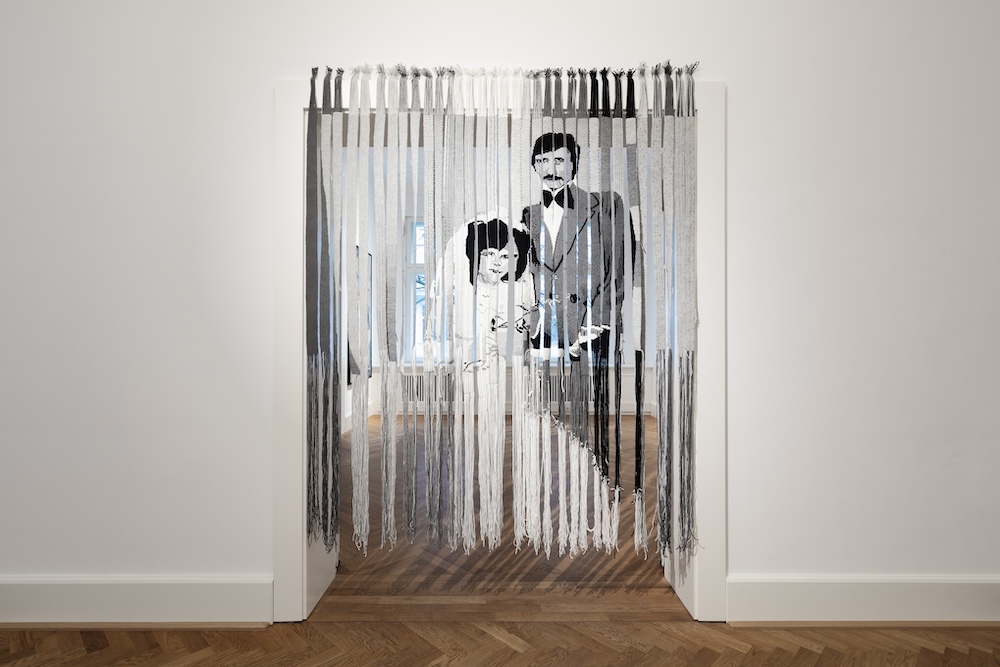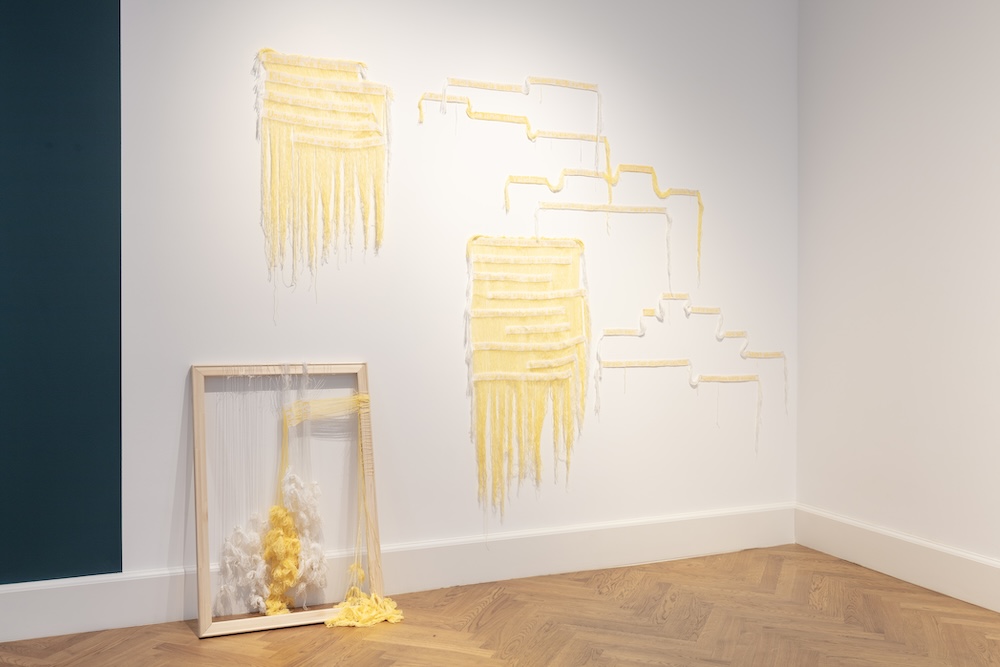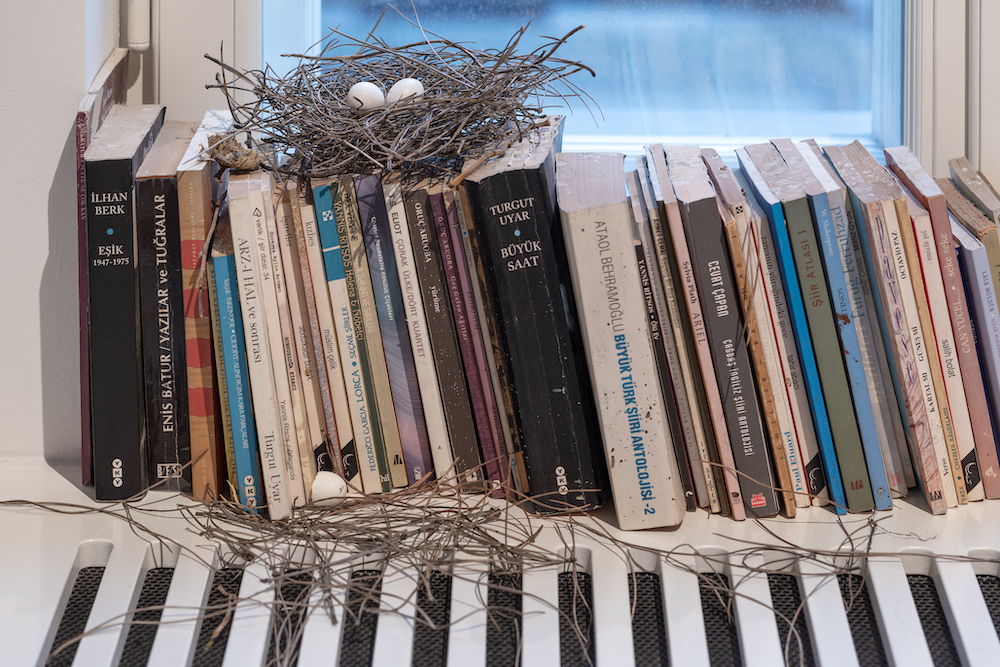Pressemitteilung - Dust and Mold
15/12/2023 - 10/02/2024
Zilberman | Berlin is pleased to announce the exhibition Dust and Mold by Eşref Yıldırım.
The video I Love Myself shows the artist, Eşref Yıldırım, standing before a mirror in the bathroom and repeating the phrases: “I love myself, I am precious, I am valuable” – while vehemently scrubbing himself with a brush full of toothpaste. Yıldırım thus turns to persiflage the self-healing advice of a psychologist, whom he visited after his partner left him. Moreover, he reads old letters to himself in front of the mirror, in which his former boyfriend accuses him of egotism. Getting angrier and angrier, he succumbs to a paroxysm of self-blame and does physical and emotional harm to himself. The video oscillates between parody and bitter earnest, between violence and comedy, then compulsive self-optimization and self-punishment and self-therapy.
Eşref Yıldırım has often addressed the subject of violence in society – including domestic violence. His starting point may be some small announcement in the newspaper, which leads him to conduct research in more depth. But he also addresses major crimes, crimes which are either never prosecuted in court or even intentionally covered up. Thus, for instance, he knit 34 masks of black yarn to memorialize the 34 young people who were killed in the Roboski Massacre in Turkey in 2011. The pair of eyes, which he wove into each mask, appears to capture the glance of the person behind the mask, as with the sarcophagus of a mummy; but it could also be the glance of the dead, or the glance of someone robbed of his identity. In earlier paintings, Yıldırım gave a face to women poets or activists for women’s rights who had been censored and suppressed from the official historical narrative, as for example in his portrait of Zabel Yesayan, an Armenian writer, or Nezihe Muhiddin, one of the founders of the Turkish women’s movement. Yıldırım often combines his paintings with knitted bands of text, which recall friendship bracelets, but which also give a voice to the faces, since they cite the works of the person portrayed.
With this exhibition, Dust and Mold, the artist ties back in to his own life experience, as indicated in the description of the video I Love Myself above. Yıldırım, who himself emphasizes that the personal is political, always regards the life of individuals within the context and under the pressures of the social hierarchies, assigned gender roles, rigid taboos, and unequal power relationships in which they are caught. In a series of paintings, which he created for this exhibition, he records his own family’s history and, as the title Dust and Mold implies, there is nothing nostalgic or sentimental in his perspective on this history. As in his work on women poets, he here creates portraits, each one drawing into focus a member of his family who has been oppressed or passed over: his mother, his aunt, his sister, and himself. To these he adds one other, that of a stray dog.
Eşref Yıldırım works newspaper clippings into his paintings, which he then tears away again – a technique of décollage, which exposes the layers of paint beneath. This process recalls the approach of the Affichistes, based on posters torn from the public space: It is a designation through removal, a liberation from an asserted completeness. Yıldırım himself says about his working process: “I remove the surface layers to make the past visible.” By showing us the various phases of his work, the artist brings the element of time back into the picture as it is viewed. He also introduces textural and tactile impressions.
We enter the exhibition through a curtain made of ribbons of textile reproducing a wedding photograph of his parents, which the artist has knitted. As we step into the first room, therefore, we touch and inevitably lift or disturb the curtain, which covers the entrance like a bridal veil. Yıldırım causes us to enter into a field of tension between participation and observation. His narrative begins with the arranged marriage of his parents. The various stages of his own childhood and youth follow. For the absence of love in all human relationships, he seeks a replacement in their relationship to animals. We have already mentioned the stray dog. Again and again, the artist allowed pairs of doves to build themselves a safe nest on the bookshelves in his room in Istanbul. Thus he also exhibits, beside his paintings, the remains of a doves’ nest.
Yıldırım says he began to knit with very thin yarn to help himself deal with the trauma of breaking up with his partner. The thin yarn felt so tender and fragile. When working with the text of a poem written by his former boyfriend – which also furnished the title for this exhibition – he felt as though he were doing something forbidden. So he tried to make the solecism invisible by knitting with yellow yarn on a white background. The first part of this work is exhibited as a textile object. During the run of the exhibition, Yıldırım will knit out the remainder of the poem in a performance, which can be watched via live video transmission. By having recourse to his own life experience, Eşref Yıldırım blurs the distinction between private and working life. For us as viewers, too, swinging between affective proximity and reflective distance, there is a blurring of the world as we experience and the world as we invent or imagine it.
Text: Lotte Laub
Translation from the German by Darrell Wilkins
The exhibition is accompanied by a catalog. For further information, please contact: berlin@zilbermangallery.com
Eşref Yıldırım (1978, Bursa) is a visual artist based in Istanbul. He studied at the Faculty of Painting at Mimar Sinan University of Fine Arts in Istanbul. His solo shows include: Dust and Mold (Zilberman | Berlin, 2023), Night Residuals (curator: T. Melis Golar, Bilsart, 2022), Diary of Defeats (Zilberman | Istanbul, 2018), Prison for Minor Offenses (Zilberman | Istanbul, 2014), Salute! (Zilberman | Istanbul, 2014), and Nobody’s Death (Zilberman | Istanbul, 2012); group shows include: Ben Yazar Suat Derviş'im (Eda Yiğit, Avrupa Pasajı, 2022), Geçmişi Unutmak Yaldızlı Bir Yalan (curator: Deniz Özgültekin, Karşı Sanat Çalışmaları, 2022), Karşı Pencere (curator: Melike Bayık, KOLİ Art Space, Istanbul, 2021), Apartman (curators: Lara Lakay & Tuba Kocakaya, Apartman No:52, Istanbul, 2021), Our Nature, Tapa artist residancy exhibition, Barın Han, Istanbul, 2020), Unlock (Zilberman | Istanbul, 2020), The Spirit of the Poet (curator: Jürgen Kaumkötter, Center for Persecuted Arts, Solingen, 2019), House of Wisdom (curator: Collective Çukurcuma, Bonington Gallery, Nottingham, 2018), Night: Collaborative Performance Proposal (Eski Datça Hotel, Datça, 2018), Confusion (organized by: Kopuntu, Milano Macao, Milano, 2017), House of Wisdom (curator: Collective Çukurcuma, Istanbul, Berlin, Amsterdam, 2017), Survival Kit (Istanbul, Yekatering, 2017), The Red Gaze (curator: A. Sh. Bruckstein, Zilberman | Berlin, 2016), Transparency of Evil or Looking to the Other (Kare Sanat, Istanbul, 2015), Prison for Minor Offenses (Sinopale 5, Sinop, 2014), Figure Out, (Dubai, UAE, 2012), In Between (İstanbul 2010 European Capital of Culture, MSGSÜ Tophane-i Amire Culture Center, Istanbul, 2010), Borders Orbits 6 (Siemens Art Space, Istanbul, 2009).
Artist Pages
- Eşref Yıldırım






